How it Works (Work in Progress)¶
(Images too small? Right-click and open in new tab to get bigger version.)
How to create a checklist template¶
Start the Template Builder¶
The checklist template builder is currently found on the web client startpage. Start it by pressing this button:
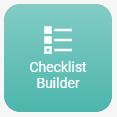
Can't see it? Check troubleshooting for more info.
Info
Wonder why the Template builder button is on the startpage and not in Lime Admin?
This is because Lime Admin is currently only available for adminstrators and not other user groups.
Create new or edit an existing checklist template¶
Once the template builder has loaded press Select Template to Edit.
Here you will see existing checklist templates and the possibility to create a new checklist template at the top.
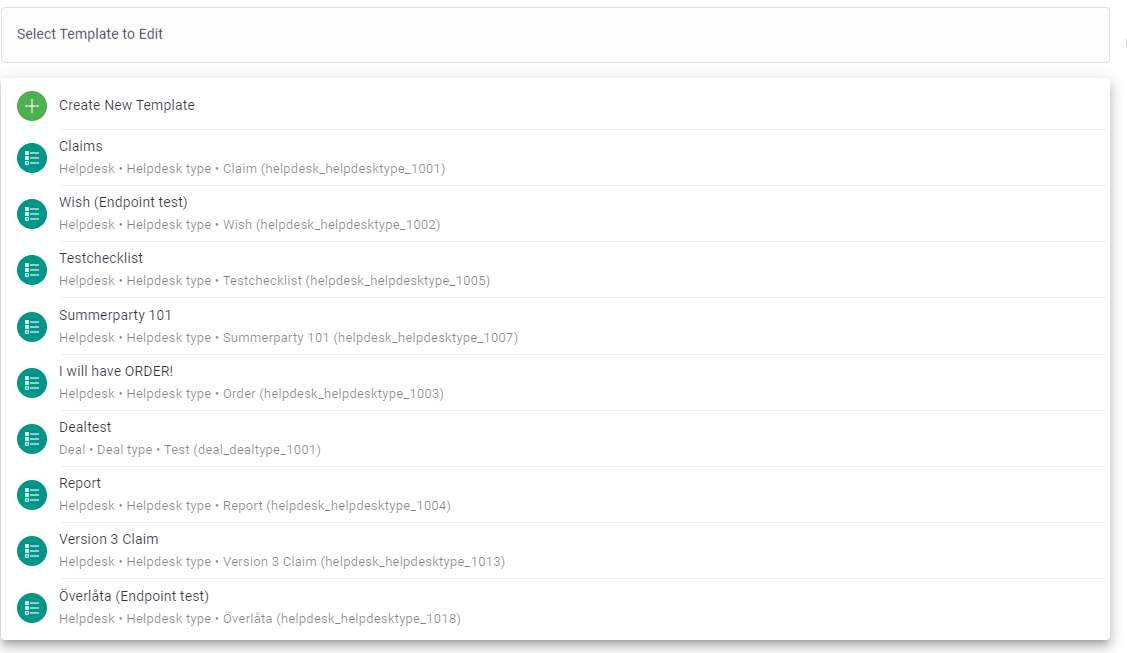
Each template has three attributes shown as OwnerLimetype_TemplateOwner_TemplatePropertyID
- Checklist Owner is the limetype where the checklist is installed. E.g
helpdesk. - Checklist Template Owner is a related limetype to Checklist Owner. E.g
helpdesktype. Checklist Template Owner belongs to Checklist Owner. - TemplatePropertyID is the
PostIDof the Template Owner. Use dropdown menu to pick your ID. No hits? - See here
A template can only be connected to one PostID and one PostID can be only be connected to one checklist template.
Basic Settings of a Template¶
When you first create a checklist template you set the basic settings for that template. These settings applies to all checklist items in the template.
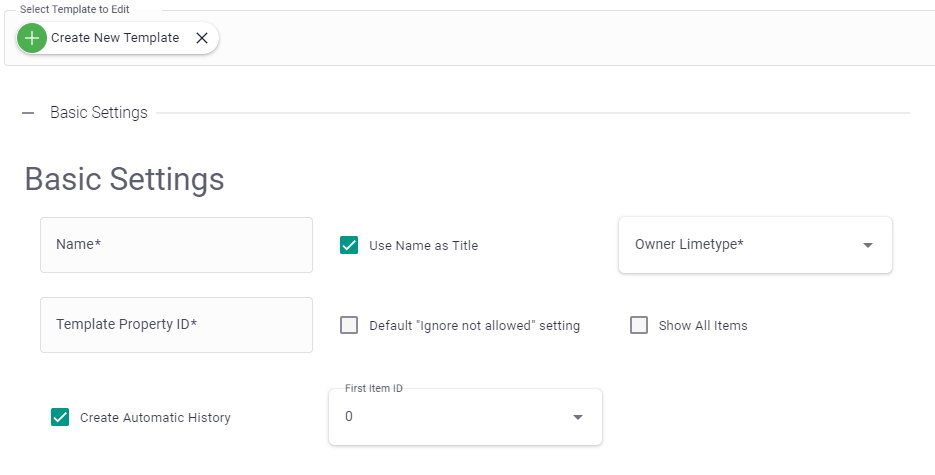
| Name | Description |
|---|---|
| Name | The name of the checklist template |
| Use Name as Title | If you the name to be displayed as a Title in the client(s) |
| Owner Limetype | On which limetype should the checklist be visible on? E.g. helpdesk or deal |
| Template Property | Which relation field/limetype is used to decide what checklist to display? E.g. helpdesktype or dealtype. |
| Template Property ID | Visible after choosing Owner Limetype and Template Property - This connects the checklist template to a certain helpdesktype or dealtype object. |
| Default "Ignore not allowed" setting | What default value "Ignore not allowed" to use when adding new checklist items in the template builder. |
| Show All Items | Enable this to show every checklist items following the one you are standing on. Will show down to your next branch or next group if you use groups. |
| Create Automatic History | Everytime a checklist is created, a checklist item is checked or unchecked an automatic history note will be created. |
| First item ID | Per default the checklist starts on the first step, however if you would like the checklist to start on later step this is possible to configure. |
| Set Properties When Activated | Here it is possible to add properties from owner to update when the step is activated (set as Current step). If the property is marked as show in title, it will also be shown next to the title in the checklist. Read more about how to set property values |
| Set Properties When Done | Here it is possible to add properties from owner to update when the step is marked as done. Read more about how to set property values |
Example of basic settings:¶
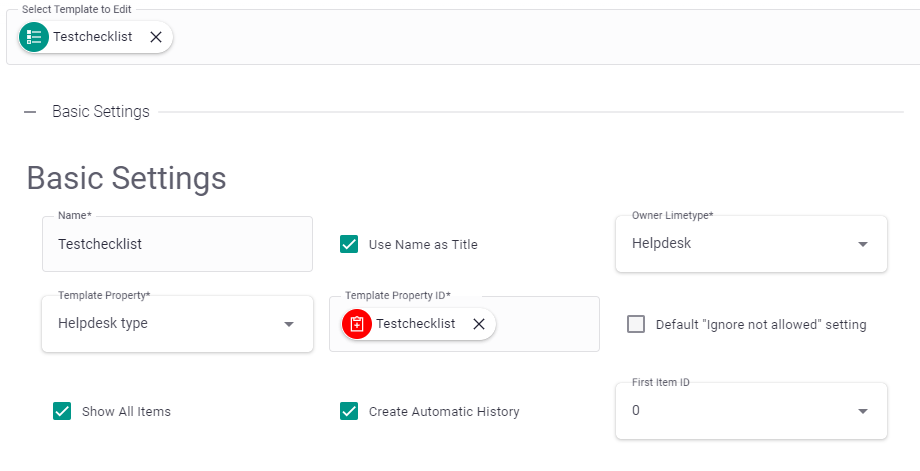
Overview of checklist builder¶
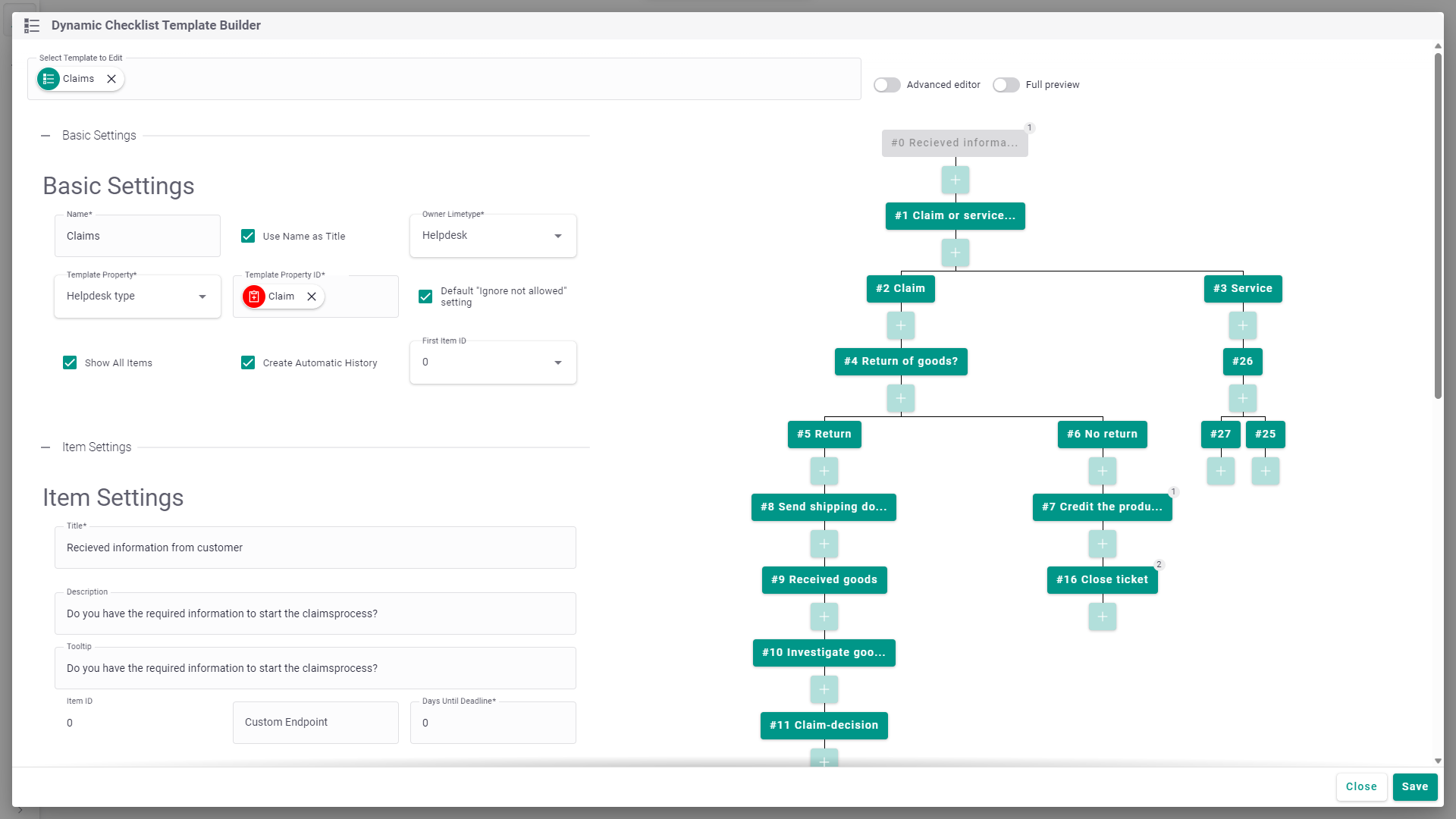
Properties¶
Depending on what type the selected property have, different ways of setting the value will appear. Below you can find a some examples on how it looks like
Date/Time properties¶
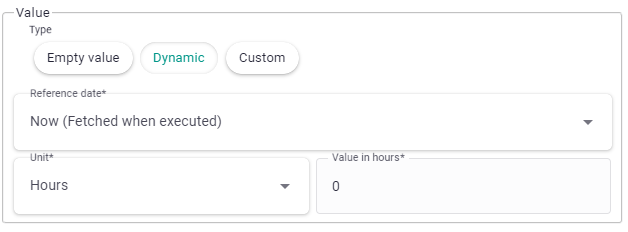
You have three different types of setting a date:
-
Empty value: Remove any existing value in the field.
-
Dynamic: Fetches a Reference date (A field on the card or "now") and add/subtract time from it. Making it possible to for instance say 1 hour from now.
-
Custom: This is a bit more advanced and makes it possible to write custom code in your solution to calculate the value to set. When the user selects this option it's possible to write a JSON object that will be passed to the function if you want specific "settings" to it. It will run a function called
limepkg_dynamic_checklist_set_time_valueon the custom limeobject for the owner limetype of the checklist.The function should return the value to set (NOT set the value inside the function) And will get the following arguments:
value: checklist_template.TimePropertyValue, # A dataclass containing the settings in the checklist owner: LimeObject, # The checklist owner prop_accessor: TimePropertyAccessor, # The property accessor of the field to set, to be able to fetch current value
Hard/Soft reset¶
Hard reset¶
Also known as Re-create checklist. This will wipe the entire progress of a checklist and fetch the newest version of the checklist template.
This is usually only available for admins because there's no way to undo it.
Soft reset¶
This will fetch the newest version of the checklist template, but will try to keep the progress of the checklist. It is a very useful thing if you've just made some minor changes in a checklist like changing name of item or action, document templates and such.
Warning
This feature can break the checklist if larger structual changes have been made in the checklist template.
Meaning you'll need to do a hard reset to be able to use it again.
The reason why we added it is because for each new version we try to add more and more validation of the checklist templates so that we can eliminate invalid templates and configuration.
This could lead to existing checklists becoming invalid due to more strict validation which could mean that a use working on a checklist could get error messages saying that their checklist is invalid after an upgrade of the package.
In the template builder you can see what validation that fails so that you can correct them, after that is fixed a user can then use the soft reset feature to fetch the newly fixes checklist template and continue their work.